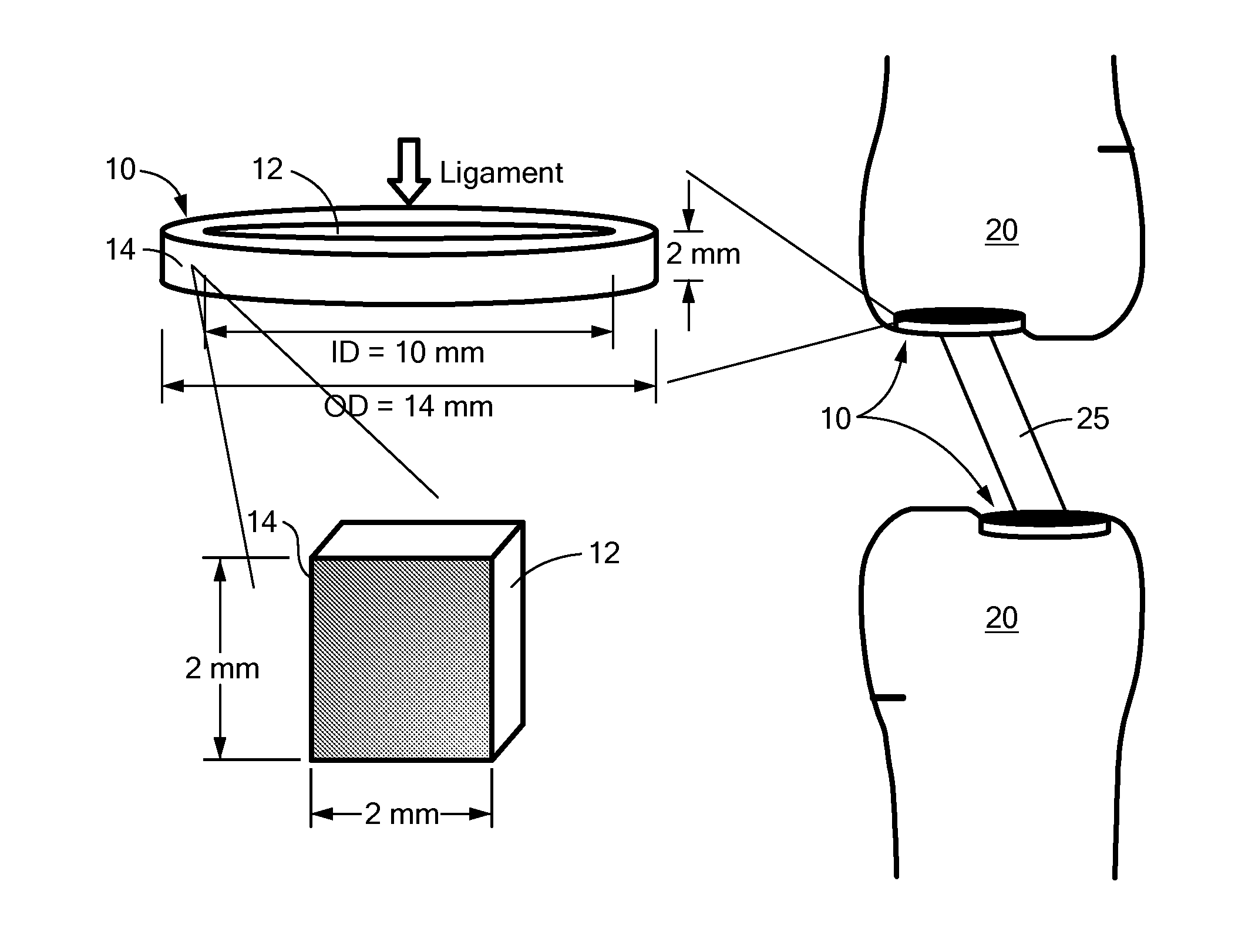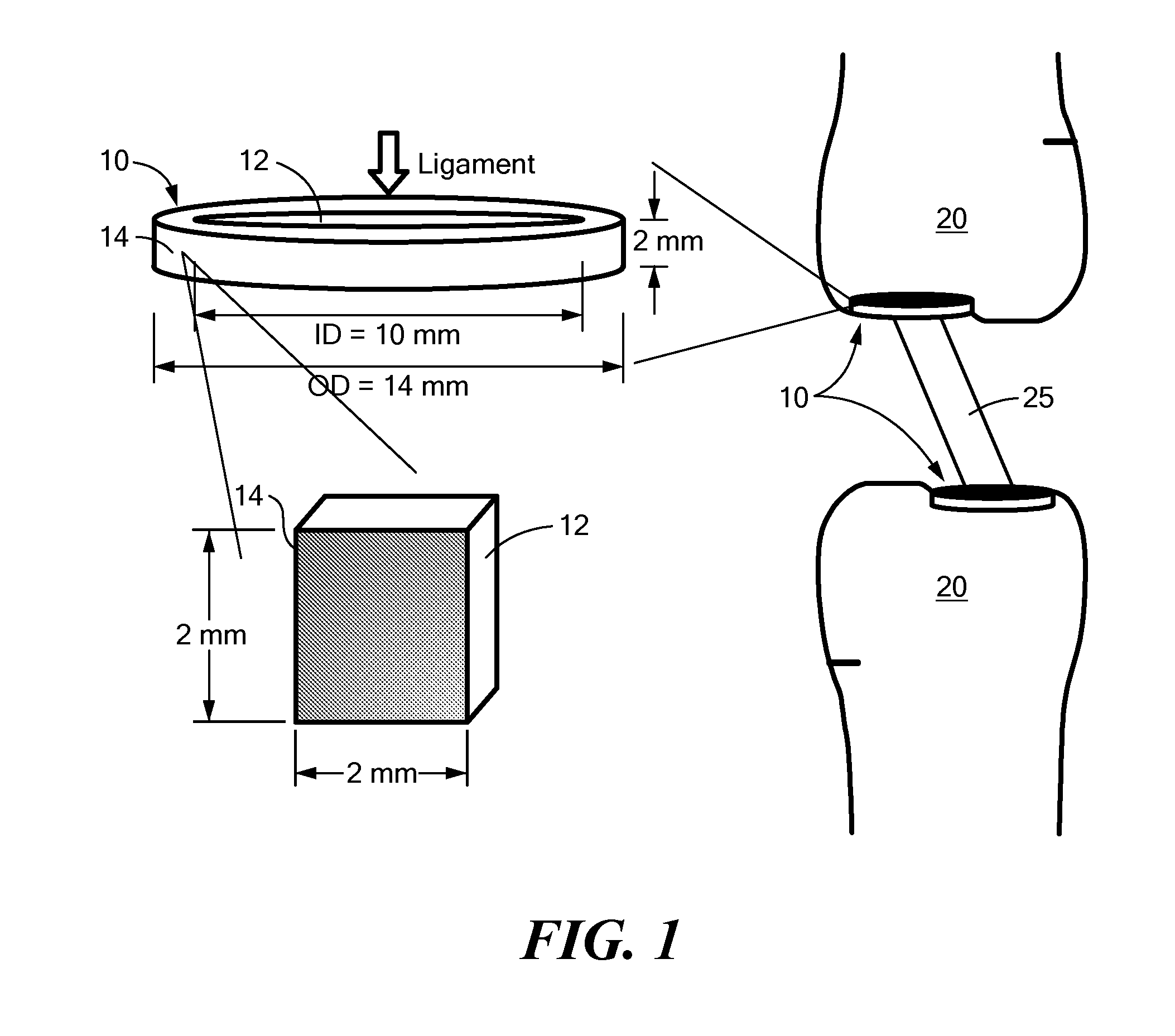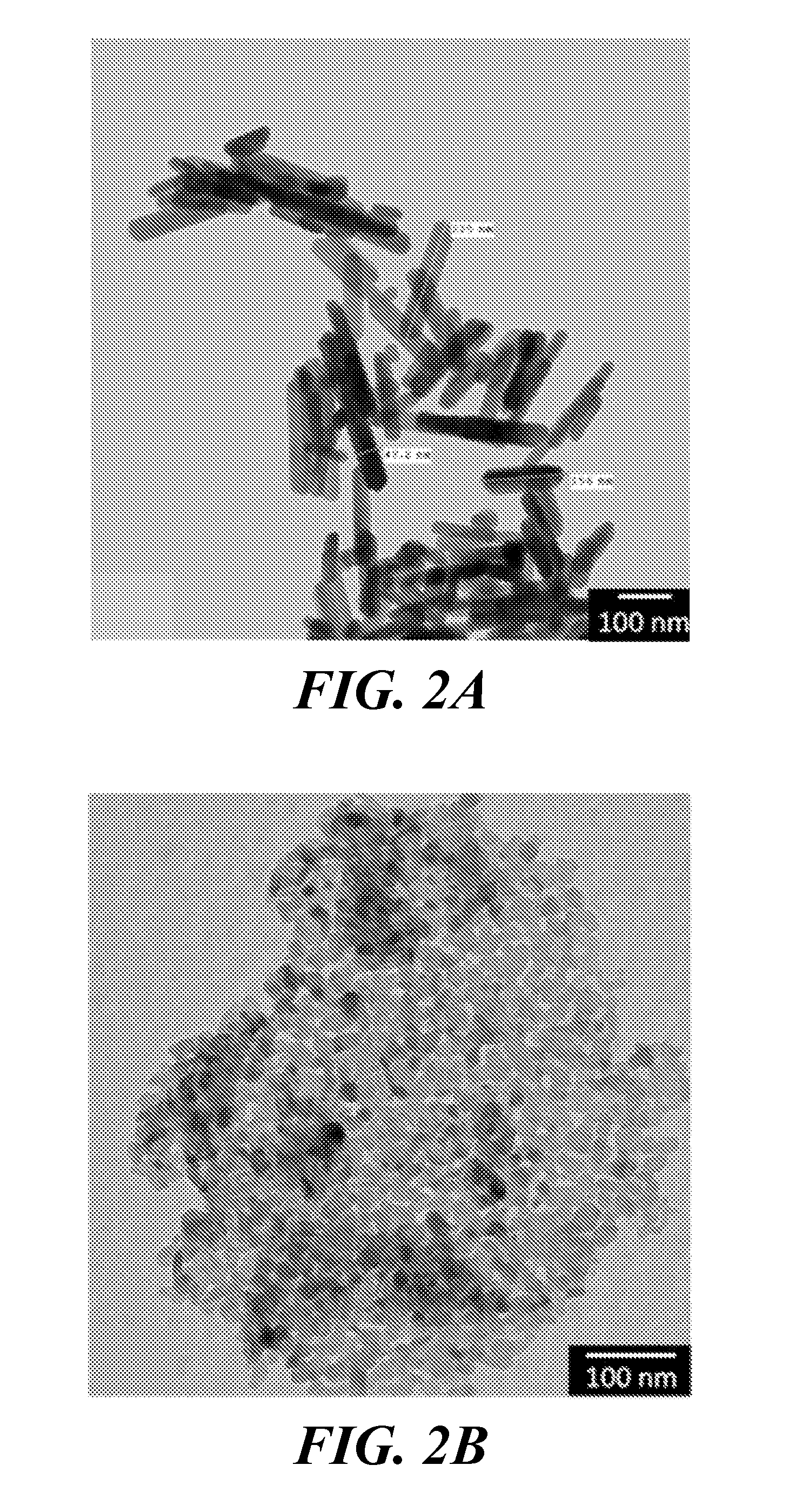Nanomaterials for the integration of soft into hard tissue
- Summary
- Abstract
- Description
- Claims
- Application Information
AI Technical Summary
Benefits of technology
Problems solved by technology
Method used
Image
Examples
example 1
Synthesis of Nanocrystalline Hydroxyapatite
[0037]Following an established procedure, hydroxyapatite (HA) precipitates were synthesized by a wet chemistry process and then treated hydrothermally to produce nanometer-sized HA. See Lopez-Macipe, et al., Wet chemical synthesis of hydroxyapatite particles from nonstoichiometric solutions, J Mater Synth Process, 6, pp. 21-6, 1998; Sato, M., et al., Increased osteoblast functions on undoped and yttrium-doped nanocrystalline hydroxyapatite coatings on titanium, Biomaterials, 27, pp. 2358-69, 2006; and Zhang, L., et al., Biomimetic Helical Rosette Nanotubes and Nanocrystalline Hydroxyapatite Coatings on Titanium for Improving Orthopedic Implants, International Journal of Nanomedicine, 3, pp. 323-34, 2008. With constant stirring, 37.5 mL of a 0.6 M ammonium hydroxide solution was added to 375 mL of deionized water which had been cooled to below 10° C. Approximately 4 mL of ammonium hydroxide was used to adjust the solution pH to about 10. The...
example 2
Nanoparticle Characterization
[0038]A JEOL JEM-101 transmission electron microscope (TEM) was used to characterize the average size and shape of the magnesium oxide (MgO) nanoparticles (purchased from US Research Nanomaterials (20 nm particle size); www.us-nano.com) and HA nanoparticles (synthesized as described in Example 1). The nanoparticle crystal structures were confirmed by x-ray diffraction (XRD), and their chemistry was characterized using Fourier transform infrared spectroscopy (FTIR).
[0039]TEM images revealed that the synthesized HA nanoparticles were rod-shaped with an average length of about 200 nm and an average width of about 40 nm (FIG. 2A). MgO nanoparticles appeared circular under TEM, with an average particle diameter of 20 nm (FIG. 2B). The FTIR spectrum, and therefore the chemical composition, of the synthesized nanoparticulate HA matched a spectrum found in literature (FIG. 3A) (Yang B, et al., Preparation and characterization of bone-like hydroxyapatite / poly(met...
example 3
Preparation of Nanocomposites
[0040]Thin polymer nanocomposite sheets were prepared by a casting method. Poly(L-lactic) acid (PLLA) (Polysciences, MW=50,000 Da), HA nanoparticles produced as described in Example 1, and MgO nanoparticles (US Research Nanomaterials, particle size 20 nm) were placed into 20 mL scintillation vials in the amounts indicated in Table 1. Then, 10 mL of chloroform was added to give 3 wt % dry ingredients in chloroform. Each vial was sealed tightly and sonicated at 40 kHz for 1 hour in a water bath set at 55° C., being careful not to exceed the 60° C. boiling temperature of chloroform. After sonication, the suspension appeared homogeneous. The polymer suspensions were poured into 60-mm diameter Pyrex petri dishes and heated at 55° C. for ˜40 minutes to evaporate excess solvent. Samples were then allowed to sit overnight, producing polymeric sheets ˜0.2 mm in thickness.
TABLE 1Amount (in grams) of dry ingredients used toproduce PLLA nanocompositesPLLA (g)Nano-HA...
PUM
| Property | Measurement | Unit |
|---|---|---|
| Thickness | aaaaa | aaaaa |
| Diameter | aaaaa | aaaaa |
| Diameter | aaaaa | aaaaa |
Abstract
Description
Claims
Application Information
 Login to View More
Login to View More - R&D
- Intellectual Property
- Life Sciences
- Materials
- Tech Scout
- Unparalleled Data Quality
- Higher Quality Content
- 60% Fewer Hallucinations
Browse by: Latest US Patents, China's latest patents, Technical Efficacy Thesaurus, Application Domain, Technology Topic, Popular Technical Reports.
© 2025 PatSnap. All rights reserved.Legal|Privacy policy|Modern Slavery Act Transparency Statement|Sitemap|About US| Contact US: help@patsnap.com



